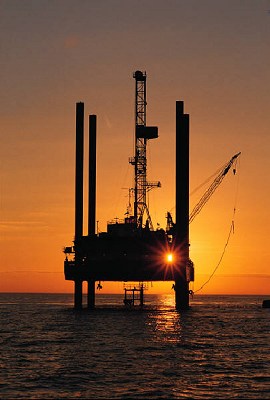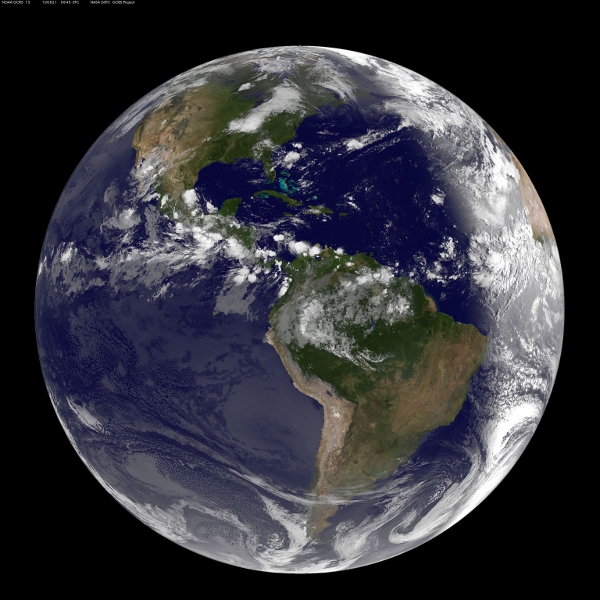
What a tremendous display of ignorance those statements are. Moreover, that kind of ignorance is not only socially accepted but considered a virtue within a number of non-hard-science groups. It is socially accepted by political scientists, humanists and other soft science groups as well as the general public to be illiterate in physics and mathematics. Whereas the other way around, ignorance in politics, history, culture and social matters are frowned upon.
In this environment, one of the misunderstandings about hard sciences is that they are completely useless for society and rather kill than save lives. Of course this is a black-and-white description, but for the sake of illustrating my point, black-and-white it is.
Now, moving on from black-and-white to a more colorful language...
In your face, softy.
Oh, the wealth of proof I can choose from and throw in the face of softies. Proof that shows not only how useful hard science is to our society and how much we depend on it in our daily lives, but how it is downright lifesaving. Here comes a tiny selection for your cultural [hard science] education.
European Synchrotron Radiation Facility - ESRF
One could say that it is totally irresponsible to just sit around and watch invisible particles accelerate in circles, right? Well, NO! Was it not for those hard, hard, very hard X-rays produced by circling particles at ESRF in Grenoble, France, tons of people would have died. Mind you this is both hard science AND hard x-rays, double disaster according to too many softies. But boy are those softies wrong. The hard x-rays save lives. Pharmaceutical industry is one of the big user groups using ESRF. It is of course used for other medical purposes as well. I don't have to explain how medicine and medical knowledge help saving lives, do I? Read about how tomography is being improved at ESRF.
Space Exploration
There are numerous examples of how our space exploration have resulted in life saving knowledge and technology. I'll give just a couple of recent examples to illustrate this fact.
NASA Search and Rescue Mission has existed in 30 years. Since the Search and Rescue system, which includes technology developed by NASA, began operations, it has saved more than 28,000 lives worldwide and 6,420 in the U.S. That are some very concrete numbers for you.
A MicroPLB Type GXL handheld device used to transmit distress signals. All 406 MHz emergency beacons like this should
be registered, and Search and Rescue authorities encourage owners of
these beacons to do so as registration will help rescue forces find
persons in distress faster in an emergency. Credit: NASA's Goddard Space Flight Center, Rebecca Roth
Working on oil rigs can be quite hazardous. One late example of that is the BP accident in the Gulf of Mexico where 11 workers lost their lives in an explosion. One of the things you need to watch out for on oil rigs are dangerous gases. Based on technology developed at ESA, new sensors are produced and installed on oil platforms, reducing the risks.

The Earth by NASA
Earth observation
It is not on the basis of analyses of human feelings or studies of our collective behavior that we have developed and enabled satellites to observe our planet. It is hard science. Earth observations from space as well as from the ground are used in all areas of society. GEO, who is set out to construct Global Earth Observation System of Systems, has in fact defined 9 societal benefit areas where Earth observations are being applied and integrated:
- Reducing loss of life and property from natural and human-induced disasters;
- Understanding environmental factors affecting human health and well-being,
- Improving the management of energy resources,
- Understanding, assessing, predicting, mitigating, and adapting to climate variability and change,
- Improving water resource management through better understanding of the water cycle,
- Improving weather information, forecasting and warning,
- Improving the management and protection of terrestrial, coastal and marine ecosystems,
- Supporting sustainable agriculture and combating desertification, and
- Understanding, monitoring and conserving biodiversity.
Shame on you softy, if you didn't know this!
Advise to socially responsible rich people
If I have had a lot of money and wanted to use them to save as many lives as possible pr my dollar, help children in developing countries and so on, I would do as Fred Kavli does, support basic hard science. With his Kavli Foundation and Kavli prizes in Astrophysics, Nanoscience and Neuroscience Fred Kavli regularly gives millions of dollars to basic hard science. Or I would fund the entire GEOSS, speeding up the process of getting an effective global Earth observation tool. Or I would fund a Moon mission program. This would unfortunately deprive me of the joy of having a personal relationship seeing a single child rescued from starvation, going to school and become a healthy happy citizen of a developing country. My reward would be knowing that I had saved and secured lives and improved the quality of life for large communities all over the world. That would be my joy and 'happy child' reward.

Credit: Children at Risk - CARF
Sobering Up
Hard sciences do save lives, but it is on the basis of combining many disciplines that we will be most efficient in improving our society – and therein lies saving more lives. The discussion about hard and soft sciences illustrate how hard it is to combine the knowledge that we have, the various value systems and languages. I have numerous examples of how this prevents us from finding solutions and/or delaying them, but, I will let that lie for now.
Mutual respect and acknowledgement of strengths, biases and limitations are necessary to succeed with interdisciplinary work.




Comments